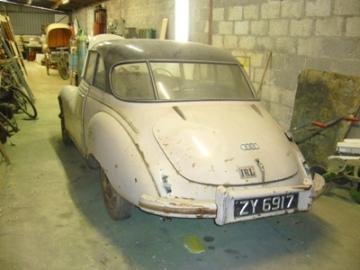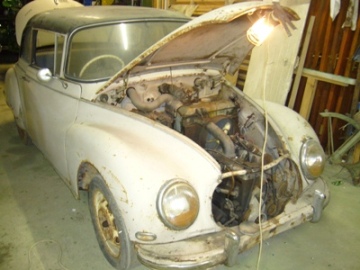The Auto
Union's 981 cc two stroke three cylinder engine came in
various states of tune. After 1960, advertised power in the
saloon versions was increased to 50 bhp (37 kW). Power was
delivered via a four speed manual gear box, controlled using
a column mounted lever. The electrical system was a six volt
one which by this time was beginning to look old fashioned.
1961 saw
the introduction of the so called Clean Oil Regulator “Frischölautomatik”,
a system incorporating a separate oil tank and pump to
dispense the oil which, in a two stroke engine, is mixed
with the fuel ahead of combustion. The stated purpose was to
reduce the characteristic blue smoke emission for which the
car was known. This was to be achieved by ensuring that oil
was introduced in exactly the correct 1:40 proportion to the
fuel, and the device was advertised as a way to improve
engine longevity. The timing of this innovation proved
unfortunate The 1962/63 winter was an exceptionally cold one
in Europe. The Auto Union 1000 model experienced an
unexpected increase in crankshaft damage because the oil,
its viscosity affected by the cold weather, was unable to
flow freely through the narrow feeder pipe in the
carburetor.


